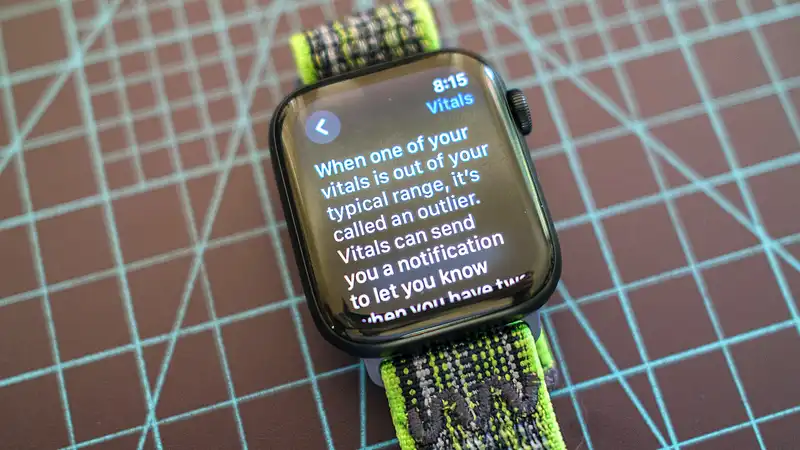Apple officially released the public beta of watchOS 11 this week
We'll have commentary and personal observations on everything from pausing activity rings to using the new Women's Health Tracking Log coming soon, but first, a little introduction to the new health app, Vitals
You are, of course, welcome to check out Vitals for yourself The public beta is open to anyone who signs up and has a compatible device Here's how to download the watchOS 11 public beta to your own Apple Watch It took about an hour to download and install
The Apple Watch has long been a great tool for tracking health and sleep quality, but data points and insights were always scattered across various apps Alternatively, they are most easily available through the iPhone's Health app
Vitals can get a snapshot of key health indicators monitored during sleep, such as average heart rate, respiration rate, blood oxygenation (on compatible models), body temperature, and sleep duration
The Vitals app needs to be worn for a week to develop a baseline of the above metrics Interestingly, I am also testing the Samsung Galaxy Watch 7 and its new AI-backed sleep tracking feature on the other wrist
Once the Apple Watch has determined your average, you can set up the Vitals app to alert you if your health trends are abnormal or differ significantly from the norm
Once the baseline is fixed, the user is greeted with a morning report on the vitals from the previous night's rest In this report, the above metrics are categorized as either “typical” or “outlier” These classifications are based on both your average and the typical range for someone your age
Individual outlier data does not necessarily lead to a health warning, but it does if multiple vital values are abnormal, especially if they occur over several consecutive nights
One thing I found odd about the new Vitals app was the lack of integration between fitness and workout data Workout and sleep quality are deeply intertwined, and having the Vitals app focus solely on measurements taken during sleep seems somewhat of an oversight Also, sleep cycle details are still only available within the Sleep app
I was also hoping that the Vitals app would provide some sort of daily score, like Garmin's Body Battery or Samsung's Energy Score, that takes into account both the quality of the previous night's rest and the intensity of the previous day's physical activity
Nevertheless, Apple has introduced something similar with Training Loads, another new watchOS 11 feature that provides insight into how training intensity affects fitness over time However, sleep data does not appear to be related to training loads
I mentioned that I am testing sleep tracking on the Galaxy Watch 7, but the Samsung Health app in Wear OS 5 provides a number of useful insights into health status after just one night of sleep, including most of the same metrics that the Vitals app records It is worth noting that
Which is more accurate? Further testing is needed Stay tuned as I sleep with far too many smartwatches on for the next week or so










Comments